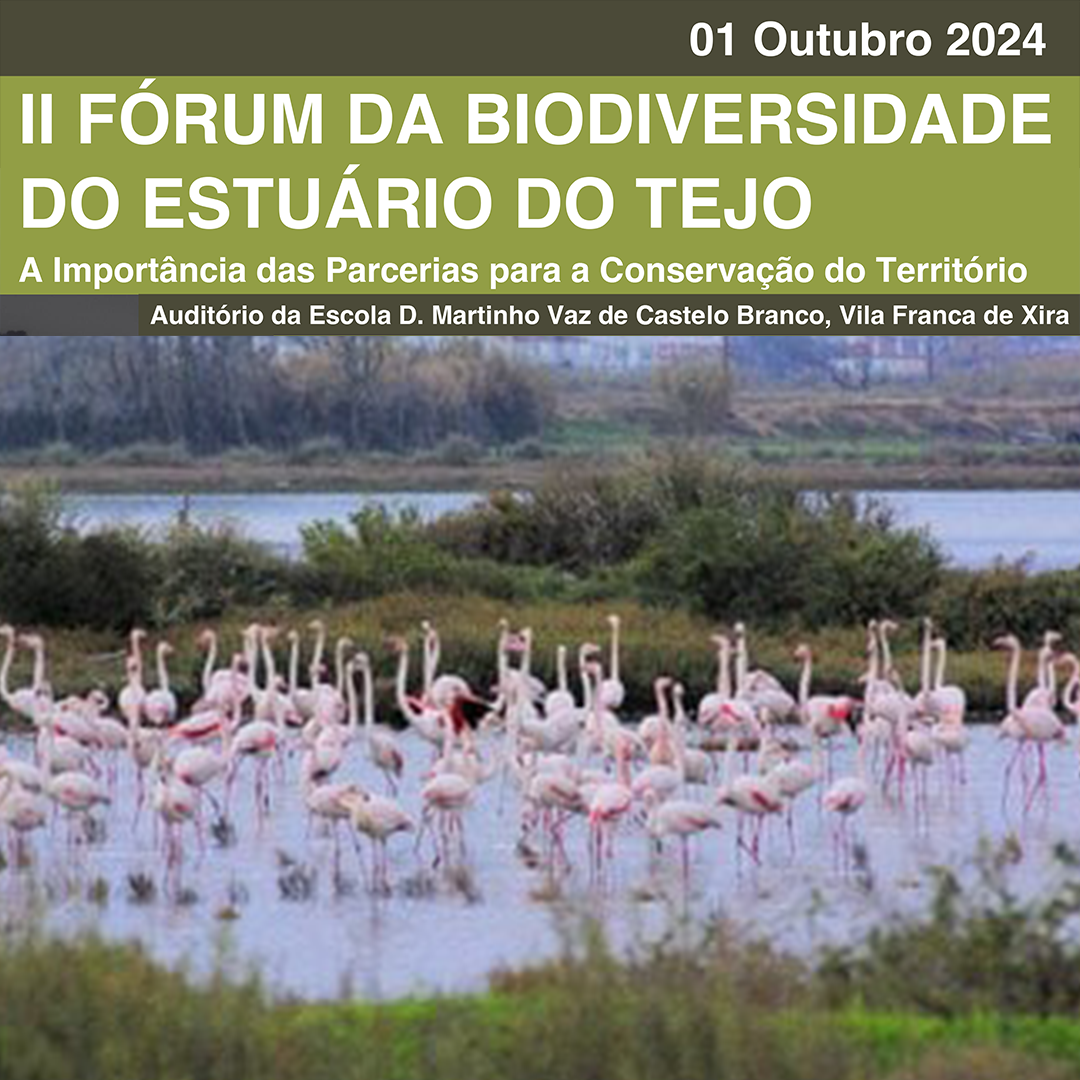On October 1st, José Alves, Researcher from CESAM, was present at the 2nd edition of the Tagus Estuary Biodiversity Forum at the invitation of ICNF and the Co-management Commission of this protected area.
The Tagus Estuary Natural Reserve Co-Management Commission (RNET) took over the annual organization of this event, after in the first edition CESAM was an organizing partner of the Forum that celebrates Biodiversity on the occasion of the anniversary of the largest wetland in the country.
This year’s edition, under the theme “The importance of partnerships for the conservation of the territory”, was attended by the President of the Vila Franca de Xira City Hall, who presides over the Co-management Committee, the Vice-President of the CCDR of Lisbon and Vale do Tejo (LVT), and the Director of Nature Conservation and Biodiversity of LVT (ICNF).
In his communication entitled “Migratory connectivity: why coordinated strategies and actions are essential for the effective conservation of migratory shorebirds.” José Alves presented the partnerships of the LIFE Godwit Flyway project. He also recalled that 10 years after the publication of the RNET Management Plan in 2008, only three of the 16 actions of the Nature Conservation and Biodiversity objective had been fulfilled, none of which involved intervention in the reserve’s habitats, but only monitoring and institutional agreements. The day after the public consultation period for the RNET Co-management Plan ended, he also pointed out that the number of shorebird populations continues to decline and that if biodiversity conservation continues to be neglected as it has been to date, there will be no fauna to justify the investment in access, signage and visiting routes provided for in this plan that aims to promote visitation to the RNET, as its main attraction, the bird populations, may cease to be so.
